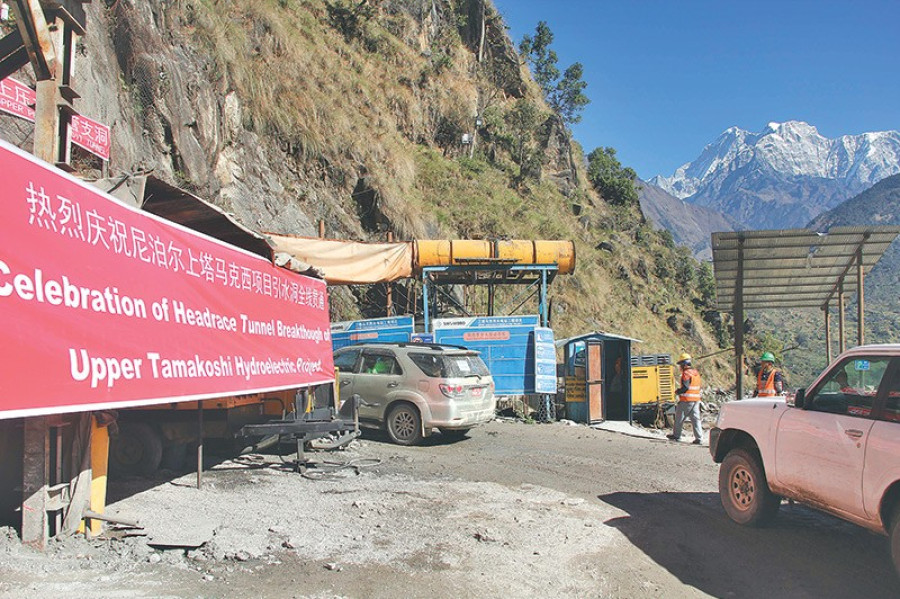Money
Workers start installing penstock pipes at 456MW Upper Tamakoshi project
Workers finally started installing penstock pipes at the Upper Tamakoshi Hydropower Project after a new contractor took charge of the construction of the plant.
Bibek Subedi
Workers finally started installing penstock pipes at the Upper Tamakoshi Hydropower Project after a new contractor took charge of the construction of the plant.
Work had halted for months at the construction site of the 456 MW scheme because the Indian contractor for the hydro-mechanical component, Texamo Railway Engineering, lacked expertise to implement the complex task.
The project developer had to appoint another contractor to fit the high pressure steel penstock pipes when Texamo abandoned the project after completing more than 95 percent of the construction work. The penstock pipe conveys water from the reservoir to the turbines to generate electricity, and fitting such pipes is considered to be one of the most challenging tasks of the hydro-mechanical component.
As delays in the execution of the hydro-mechanical component threatened to push back the completion date of the project which was already running late, project developer Upper Tamakoshi Hydropower Limited asked the Indian contractor to reassign the crucial task of installing the penstock pipes to Austrian firm Andritz Hydro.
Consequently, Upper Tamakoshi Hydropower Limited, Texamo and Andritz signed a tripartite agreement in January under which the Indian firm subcontracted the penstock installation part of the job to the Austrian company.
Immediately after signing the pact, Andritz mobilised workers at the project site and construction work resumed.
“Andritz Hydro has transported all the pipes and equipment to the project site and started installation work,” said Bigyan Prasad Shrestha, project chief of Upper Tamakoshi. “We are on track to meet the completion deadline of November set by the government.”
The national pride project located in Dolakha district in north central Nepal plans to start commercial generation of electricity by mid-November after revising its completion deadline for the third time.
The project has faced cost overruns due to delays. It was initially planned to be built at a cost of Rs35 billion, but the final bill is now expected to reach Rs50 billion.
The total cost will reach Rs70 billion if interest is added. Nevertheless, the project is considered to be a model project which is being developed with domestic resources and a high level of participation by project-affected locals and the general public.
Upper Tamakoshi is a strategic project designed to end the country’s perennial power crisis. After Upper Tamakoshi roars into life, Nepal is projected to have surplus energy at least during the wet season, and the Nepal Electricity Authority, the state-owned power utility which is the sole off taker of power in the country, will be in a position to export electricity to neighbouring India.




 6.1°C Kathmandu
6.1°C Kathmandu















